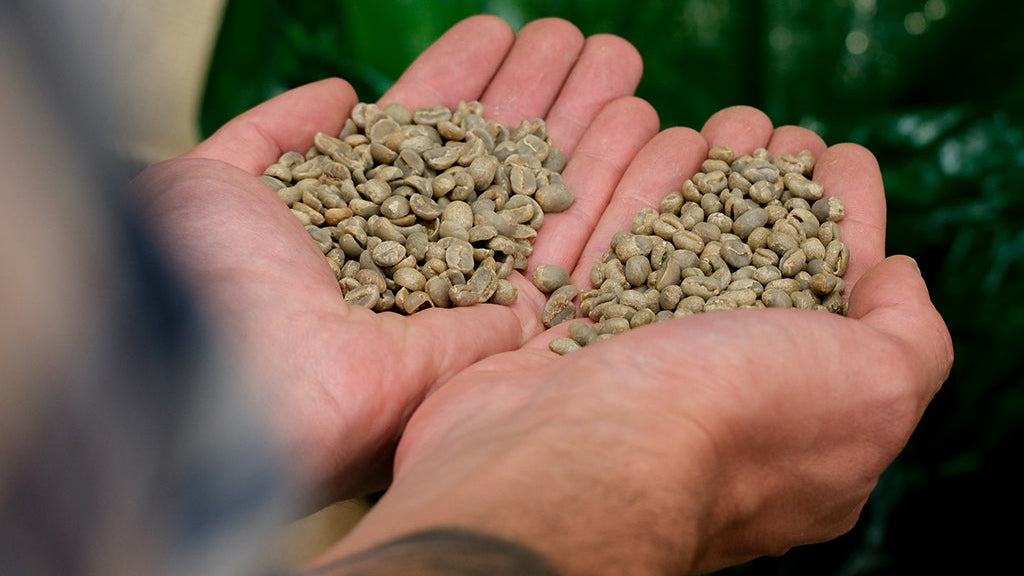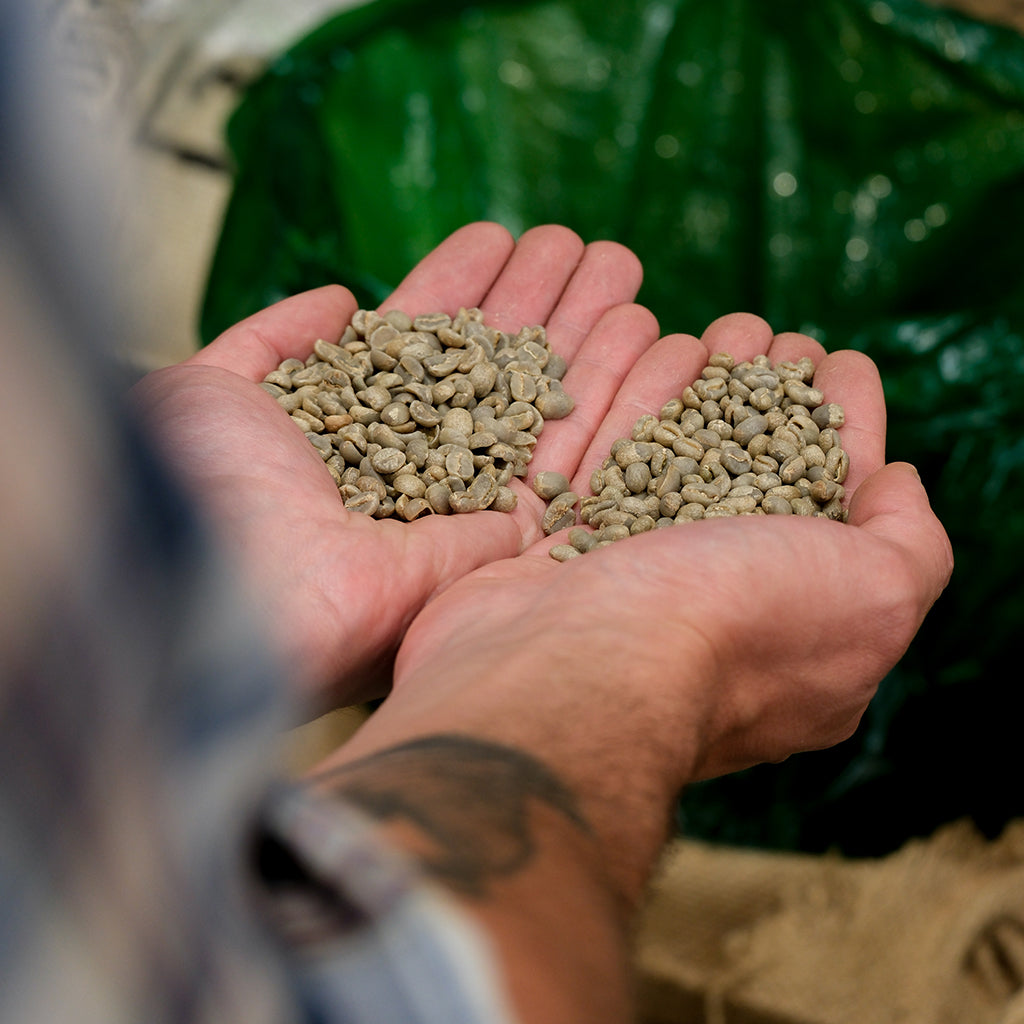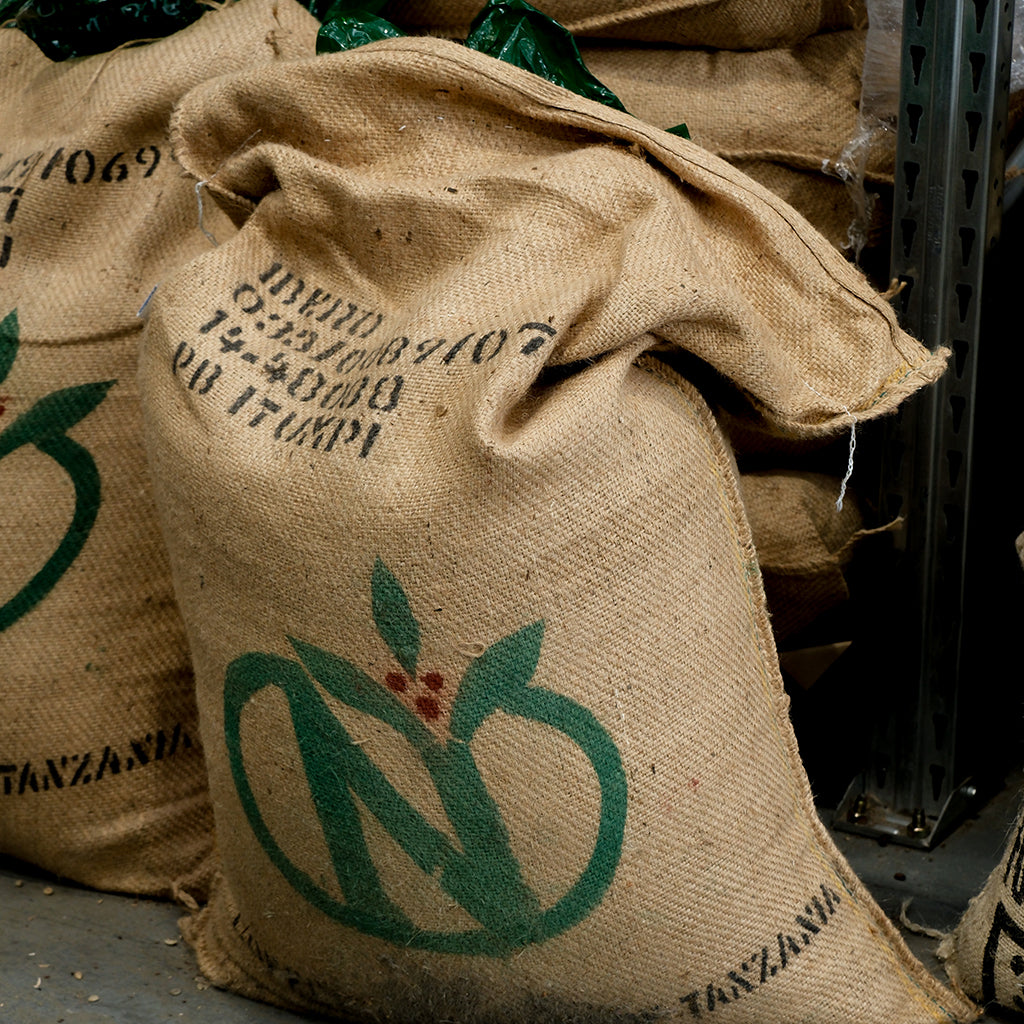
What is a Peaberry?
Coffee cherries typically contain two flattened, oval-shaped seeds – or ‘beans’. However, a less common, yet distinct, natural mutation known as the Peaberry deviates from this usual form, with interesting, and debatable, implications on flavour.
Identifying a Peaberry
A Peaberry is characterised by the presence of a single, rounded seed within a coffee cherry, as opposed to the standard two flattened ovals. This shape divergence is a natural mutation, found in approximately 5-10% of coffee cherries across all varieties and origins. It occurs when only one ovule within the coffee flower is successfully fertilised, resulting in the development of a singular, rounded, pea-shaped seed rather than the typical twin formation. The singular seed within the cherry fully utilises the available space for growth, leading to its distinctive rounded form.


Roasting
It has been widely agreed that the Peaberry's spherical shape offers advantages in the roasting process. The uniform shape facilitates more consistent heat transfer and even tumbling within the roasting drum, often leading to a more uniform roast when compared to irregularly shaped flat beans. While coffee processionals continue to discuss advantages to flavour due to singular development, the agreed benefit observed by roasters is the enhanced potential for a consistent and predictable roast profile – rendering them a valuable experimental coffee. This uniformity in roasting can allow the characteristics of the coffee to manifest with greater clarity.
Quality and Flavour
The opinion of the impact of the Peaberry mutation on a coffee’s flavour profile remains a subject of ongoing discussion within the coffee industry. There is a growing theory that the Peaberry beans are of a higher quality than their double-seed counterparts.
This theory suggests that the single seed absorbs all the nutrients of the cherry that would usually be split between two, imparting a brighter, bolder and more concentrated taste. An important factor to consider in this case is that any perceived differences in acidity, sweetness, or body could be attributed to the enhanced uniformity of roast, which amplifies the characteristics of the coffee's origin, processing method, and roast profile. As always, the practices, care, and skill involved in cultivation remain to be some of the most significant contributors to a coffee's quality and taste. While the debate continues regarding the Peaberry's distinct flavour profile, the utilisation and appreciation of such natural variations are always beneficial for the planet, and the ongoing pursuit of discovery.